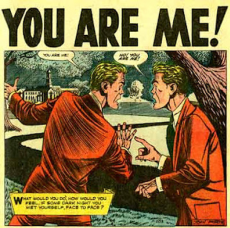
Email: reecejordan98@hotmail.co.uk
Total Article : 168
About Me:18-year-old sixth form student, studying English Literature, History and Government and Politics. My articles will broadly cover topics from the current affairs of politics to reviews of books and albums, as well as adding my own creative pieces, whether it be short fiction or general opinion.

This suggests that the regime set out to construct an ideal, or at least guise itself as an ideal, something akin to what Zipes points out in infantile readers with fairy tales: ‘the reader invests the real world with the constructs of the tale’. This doubling of an authoritarian regime with the fairy tale genre inverts Freud’s assertion that ‘fairy tales teem with instantaneous wish-fulfilments, and there is nothing uncanny about these’. Indeed, Atwood constructs the Gilead regime by doubling these very ‘wish-fulfilments’; her dystopia is a warped utopia.
This doubling of an authoritarian regime with the fairy tale genre may not just be a mere parallel, but something which the regime strived to achieve. Zipes states that, ‘fairy tales were more or less constructed to follow the classical pattern and to reinforce the dominant social codes’.[3] It must be noted that it is the regime that has imposed the fairy tale regalia, and that this seems like a ‘parody of something’. This ‘parody’ element comes from the regime’s construction of a pseudo-fairy tale. The regime has not established a traditional fairy tale, which ‘abandons the basis of reality from the start’. Instead, it has attempted to create its own fairy tale within reality. The regime, with its extreme devout religious rituals (though many are warped) and low regard for women, can be viewed as a satire of politics of the 1980s (when the novel was first published), which saw the conclusion of the second wave of feminism and a return of conservatism with the Reagan presidency, which championed the idea of ‘older and more lasting set of values’. Thus, the completely non-revealing fairy tale outfit can be seen as a ‘parody’ of the liberation of women from sexualisation and fetishism as well as a return to modesty and ‘older’ values. This again is an example of the lines between reality and fantasy being blurred, and Atwood includes this element of the uncanny to serve as a precaution to strict adherence to any idealism, or that which purports to be idealism.
Margaret Atwood’s The Handmaid’s Tale is not merely a doctrinal feminist manifesto. With its adoption, as well as adaptation, of Sigmund Freud’s elements of the uncanny, Atwood constructs a dystopia which displays a disturbing sense of plausibility. The novel shows both the seduction and danger of pursuing a utopian system, as well as the peril of merging reality and fantasy where the two should remain distinct. Furthermore, the novel serves as a rousing wake-up call to pay attention and engage with the historical narratives of the past. To not do so, the novel suggests, could produce a similar outcome as those subject to the Gilead regime.
Image Credits: scalar.usc.edu

0 Comment:
Be the first one to comment on this article.